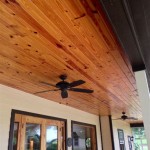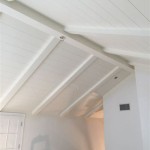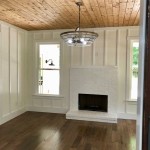What Are Ceiling Tiles Made Of?
Ceiling tiles are a ubiquitous element in commercial and residential construction, serving both aesthetic and functional purposes. They are designed to improve acoustics, conceal wiring and plumbing, and offer a finished appearance to a room. The materials used in their manufacture vary widely, influencing their performance characteristics, cost, and environmental impact. Understanding the composition of ceiling tiles is crucial for making informed decisions regarding selection, installation, and maintenance.
The selection of material for ceiling tiles is contingent upon several factors, including the intended application, budget constraints, and desired performance attributes. Factors like fire resistance, sound absorption, moisture resistance, and aesthetic appeal all play a significant role in determining the most suitable material for a given project. Consequently, manufacturers employ a diverse range of materials, each with its own distinct set of properties and advantages.
Mineral Fiber Ceiling Tiles
Mineral fiber ceiling tiles are among the most common types available. These tiles are primarily composed of recycled materials, including slag wool, rock wool, and cellulose. Slag wool is a byproduct of the steelmaking process, while rock wool is produced from volcanic rock. Cellulose, in this context, typically comes from recycled paper products, such as newspapers and cardboard. The exact proportions of these materials vary depending on the manufacturer and the specific properties desired in the finished tile.
The manufacturing process involves blending these raw materials with water and binders to create a slurry. This slurry is then formed into sheets and pressed to achieve the desired thickness and density. The tiles are subsequently dried and often coated with a paint or other finish to enhance their appearance and durability. Some manufacturers also incorporate additives to improve fire resistance, sound absorption, or resistance to mold and mildew.
Mineral fiber ceiling tiles offer a good balance of performance and affordability. They typically provide adequate sound absorption, which helps to reduce noise levels in a room. They also possess a reasonable degree of fire resistance, contributing to overall building safety. Furthermore, their relatively low cost makes them a popular choice for large-scale commercial projects, where budget considerations are often paramount.
However, mineral fiber tiles are also susceptible to damage from moisture. Prolonged exposure to humidity or water leaks can cause them to sag, stain, or even crumble. This makes them less suitable for environments prone to high humidity or water intrusion, such as bathrooms or kitchens, unless they are specifically designed and rated for such applications.
Acoustic Ceiling Tiles
Acoustic ceiling tiles are specifically engineered to enhance sound absorption and reduce reverberation within a space. These tiles often utilize specialized materials and designs to maximize their acoustic performance. While mineral fiber tiles offer some degree of sound absorption, acoustic ceiling tiles typically outperform them in this regard.
Numerous materials can be employed in the construction of acoustic ceiling tiles. Some utilize a high density mineral fiber core, while others incorporate fiberglass or foam materials. The surface of the tile is often perforated or textured to further enhance sound absorption. The perforations allow sound waves to enter the tile, where they are absorbed by the core material.
Fabric-wrapped fiberglass panels are another common type of acoustic ceiling tile. These panels consist of a fiberglass core that is wrapped in a fabric covering. The fabric not only enhances the aesthetic appeal of the tile but also contributes to its acoustic performance by diffusing sound waves. These panels are often used in recording studios, home theaters, and other environments where superior acoustic control is essential.
Acoustic ceiling tiles are generally more expensive than standard mineral fiber tiles, but their superior acoustic performance often justifies the higher cost in situations where noise control is a priority. They are commonly used in offices, schools, hospitals, and other environments where reducing noise levels can improve productivity, comfort, and overall well-being.
Metal Ceiling Tiles
Metal ceiling tiles offer a distinct aesthetic and performance profile compared to mineral fiber and acoustic tiles. These tiles are typically made from aluminum or steel, and they can be finished in a variety of colors and textures. Metal ceiling tiles are often used in modern and contemporary designs, where they can contribute to a sleek and industrial aesthetic.
Metal ceiling tiles are highly durable and resistant to damage from moisture, impacts, and other environmental factors. They are also non-combustible, making them a safe choice for environments where fire resistance is a concern. Furthermore, metal tiles are easy to clean and maintain, making them a practical choice for high-traffic areas.
While metal tiles are not inherently sound-absorbent, they can be perforated or backed with acoustic materials to improve their acoustic performance. Perforations allow sound waves to enter the tile, where they can be absorbed by the backing material. This combination of durability, aesthetics, and acoustic performance makes metal ceiling tiles a versatile option for a wide range of applications.
The price of metal ceiling tiles can vary significantly depending on the material, finish, and acoustic performance. However, they are generally more expensive than mineral fiber tiles. Their durability and longevity, however, can result in lower life-cycle costs compared to other ceiling tile options. Metal tiles are frequently employed in retail spaces, restaurants, and other commercial environments where a modern and durable finish is desired.
Maintenance of metal ceiling tiles often involves periodic cleaning with a mild detergent and water. Their resistance to moisture and other environmental factors simplifies the cleaning process. This contributes to their appeal in environments where hygiene and ease of maintenance are crucial factors.
Specialty Ceiling Tiles
In addition to the common types described above, a variety of specialty ceiling tiles are available for specific applications. These tiles may be made from materials such as wood, plastic, or composite materials, and they often offer unique performance characteristics or aesthetic options.
Wood ceiling tiles can add warmth and character to a space, and they are often used in residential and commercial settings where a natural aesthetic is desired. Wood tiles can be made from solid wood or wood veneer, and they can be finished in a variety of stains and sealants to enhance their appearance and durability. However, wood tiles are generally more expensive than other types of ceiling tiles, and they may require more maintenance to prevent warping or cracking.
Plastic ceiling tiles are lightweight, moisture-resistant, and easy to clean. They are often used in bathrooms, kitchens, and other environments where moisture is a concern. Plastic tiles can be made from PVC or other polymers, and they can be molded into a variety of shapes and patterns. They are also available in a wide range of colors and finishes, making them a versatile option for different design styles.
Composite ceiling tiles combine the benefits of different materials to achieve specific performance characteristics. For example, a composite tile might consist of a mineral fiber core with a plastic or metal facing. This combination can provide a balance of sound absorption, fire resistance, and durability. Composite tiles are often used in commercial buildings where a combination of performance requirements must be met.
The selection of ceiling tile material is a multifaceted decision, demanding careful consideration of various factors. Performance requirements, budgetary limitations, and aesthetic preferences all contribute to the determination of the most appropriate material for a given application. A thorough understanding of the characteristics and properties of each material is crucial for making an informed choice that will meet the needs of the project.
Ultimately, the optimal choice of ceiling tile material is a balance between the desired aesthetics, required performance characteristics, and budgetary constraints. Consulting with architects, contractors, and ceiling tile suppliers can further assist in making the most appropriate selection for a specific project.

What Are Ceiling Tiles Made Of Granmore Ceilings

What Are Suspended Ceiling Tiles Made From
What Are Ceiling Tiles Made Out Of Quora
What Are Ceiling Tiles Made Out Of Quora

Ceiling Tiles Designing Buildings

Ceilings The Home Depot

Dropped Ceiling Wikipedia

Ways To Identify Asbestos Ceiling Tiles Boggs Inspection Services

Mineral Fiber False Ceiling Tile China Board Made In Com

Tz Ceiling
Related Posts








